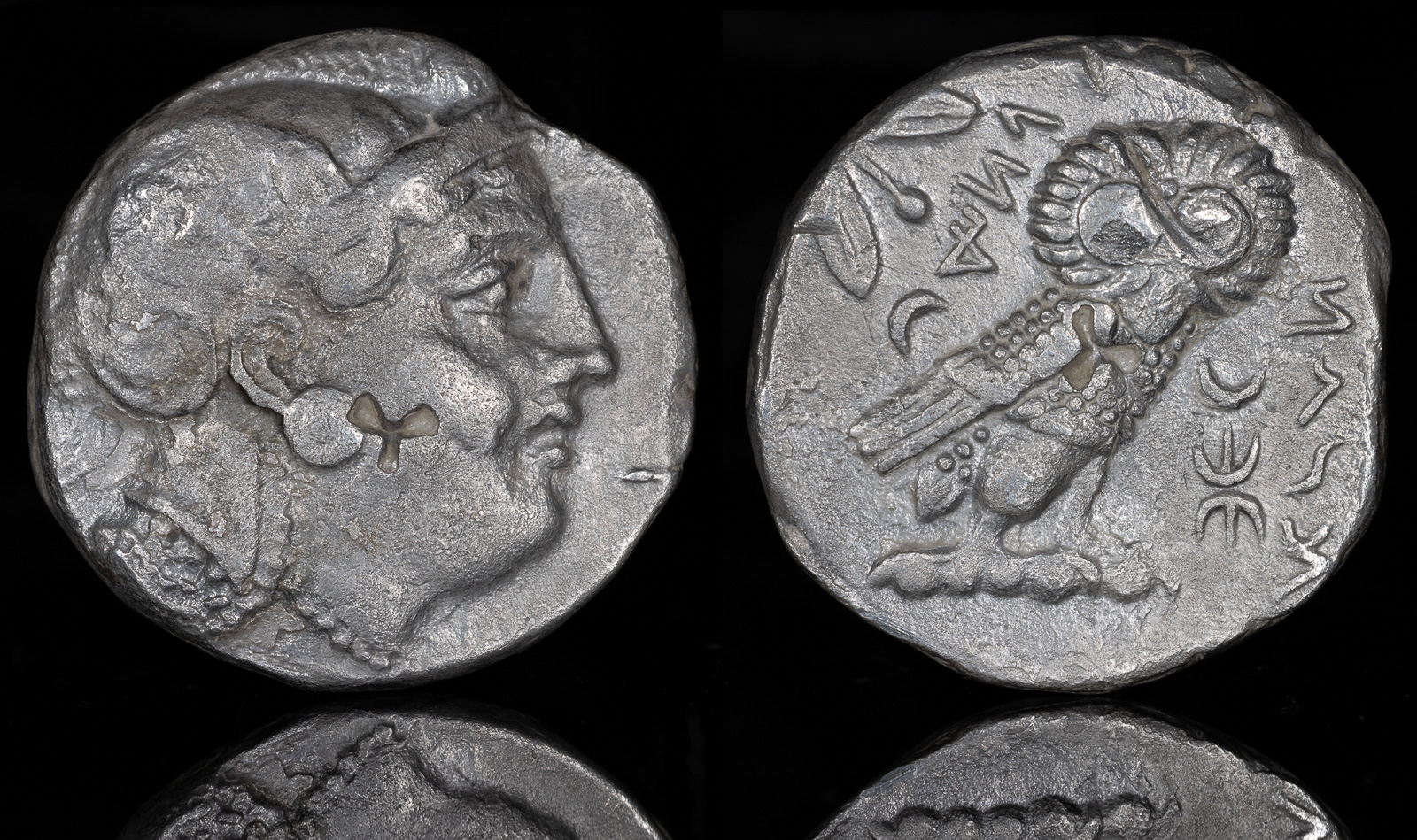
Egypt, Achaemenid Province. Sabakes, satrap, AR Tetradrachm. Circa 340-333 BCE
16.61g, 25mm, 9h.
Head of Athena to right, wearing earring, necklace, and crested Attic helmet decorated with three olive leaves over visor and a spiral palmette on the bowl / Owl standing to right with head facing, olive sprig with berry and crescent in upper left field; uncertain letters to left, Sabakes symbol and SWYK (in Aramaic) to right.
Van Alfen Type III, 24-34 var. (O11/R- [unlisted rev. die]); Nicolet-Pierre, Monnaies 18-26 (same obv. die); SNG Copenhagen 4 var. (no letters on left of rev.); BMC 265 var. (same).
This is a coin I didn’t think I’d ever get so nice. I honestly felt I stood no chance at the auction, but to my surprise I won! Sabakes was the satrap of Egypt under Darius III, and he took part in the Battle of Issus against Alexander the Great, where he was killed.
Like many of the previous pharaohs, Sabakes preferred to mint similar coins to the famous Athenian owls, probably because that was the dominant coinage at the time. The important thing with these coins are the inscriptions. Just to the right of the owl is the “Sabakes symbol”, most likely trade-marked by him at the time.
To the right of that is SWYK in Aramaic, which may either also mean Sabakes or it could be the location where the coin was minted. To the left of the owl, just above the crescent moon (also copied from the Athenian coins), is an inscription that to this day we don’t understand.
These coins come up rarely at auction, and I was thrilled to obtain one with the complete inscriptions. The test marks on the face of Athena and the owl are typical, and were used to verify that the coin was genuine. It’s not uncommon to see huge cuts in these coins, but this one thankfully one has a slight one over the owl’s head.
Sabakes, satrap of Egypt, dies at the Battle of Issos. Mazakes is appointed by Darius III to replace him.